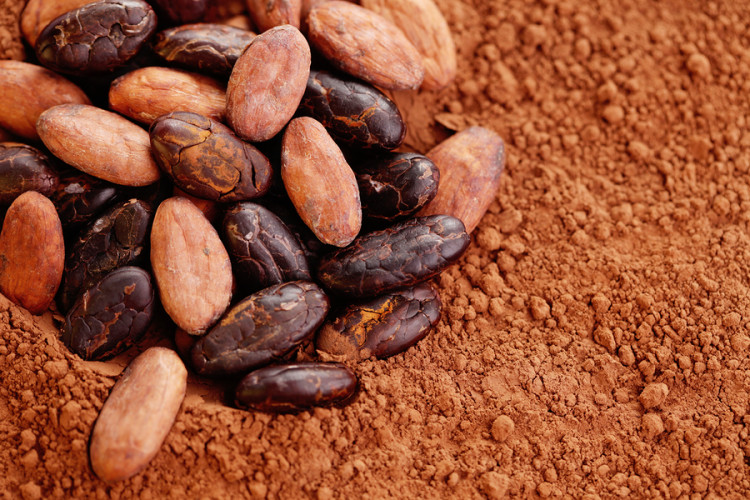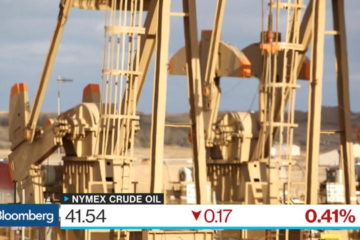2015’s Best Commodity Could Turn Into This Year’s Nightmare

©2016 Bloomberg News
Isis Almeida
(Bloomberg) — Last year’s best-performing commodity is poised to become the market’s worst nightmare.
After the longest rally in London cocoa futures since at least 1989, farmers from Ivory Coast to Peru are preparing to revive supplies in the 2016-17 season that starts in October, creating a surplus that Rabobank International says will be the largest in six years. With demand slowing, the bank is most bearish about prices for the chocolate ingredient this year among the dozen agricultural commodities it tracks.
Prices surged 60 percent during a four-year rally through 2015, forcing candy makers from Hershey Co. to Lindt & Spruengli AG to charge more for their products. Last year, El Nino weather patterns left dry conditions that hurt cocoa crops, including in West Africa, which produces about 70 percent of the world’s beans. London futures in December reached 2,332 pounds ($3,423) a metric ton, the most since 2011, when a civil war disrupted exports from Ivory Coast, the top supplier.
“We expect these very good international prices to incentivize production,” said Carlos Mera, an analyst at Rabobank in London. “We don’t think these levels are justified given the political stability in West Africa.”
Cocoa was an anomaly last year, rising 14 percent in London, when almost every other major commodity tumbled. The gain was the biggest of the 24 commodities tracked by the Standard & Poor’s GSCI Spot Index, which slid more than 25 percent. Rabobank says cocoa futures in London may slide to 1,800 pounds by the fourth quarter, down 19 percent from Monday’s close at 2,209 pounds.
Here are five reasons for the bearish outlook:
1. Farmer Profit
The government in Ivory Coast, which accounts for almost 40 percent of global production, raised prices paid to farmers for a third consecutive year. Growers will get 1,000 CFA francs ($1.62) per kilogram during the bigger of two annual harvests in the 2015-16 season, an 18 percent increase from a year earlier.
It’s the first time farmers across the country have had such a high fixed price for an entire growing season, said Edward George, head of soft commodities research at Ecobank Transnational Inc., a lender based in Lome, Togo. Previously, if prices ever got that high, they were only in certain areas or didn’t last long, George said.
2. Weaker Demand
With the cost rising for chocolate makers, many have tapped into inventories, cutting demand for new supplies. Global grindings by processors, an indication of consumption, will probably be unchanged or rise as little as 0.5 percent in the 2015-16 season that started Oct. 1, according to a November estimate by Cargill Inc., the world’s second-biggest processor.
Barry Callebaut AG, the top processor and largest maker of bulk chocolate, is closing a factory in Thailand and reducing output in Malaysia. The company said overcapacity, high prices and slowing demand made grindings less profitable.
3. Rains Return
Dry conditions from El Nino probably will be replaced by a more favorable La Nina pattern that will bring more moisture to cocoa crops, according to MDA Weather Services. Three of five strong El Ninos since the 1950s were followed by La Nina, said Kyle Tapley, a forecaster for MDA.
“As far as cocoa is concerned, La Nina generally leads to wetter-than-normal conditions across West Africa,” Tapley said in an e-mailed response to questions.
4. Latin America
While farmers in Ivory Coast and Ghana continue to dominate supply, output is growing in Latin America. Countries in the region have been planting high-yielding trees, according to the London-based International Cocoa Organization. Production in Ecuador rose 6.8 percent in 2014-15, and expansion is occurring in Colombia and Peru, the industry group said.
“Offers are starting to increase from places like Central America as producers look to cocoa to replace coffee,” Jack Scoville, vice president at Price Futures Group Inc. in Chicago, said by e-mail. “This is small now but has really gained traction over the last couple of years and will expand.”
5. Surplus Ahead
After a production deficit of about 150,000 tons in the 2015-16 season that started in October, the world will soon have more supply than it needs. Output will exceed demand by 93,000 tons in the 2016-17 season, according to Rabobank. That would be the biggest glut since 2010-11.
To contact the reporter on this story: Isis Almeida in London at ialmeida3@bloomberg.net To contact the editors responsible for this story: Lynn Thomasson at lthomasson@bloomberg.net Ana Monteiro, Steve Stroth







No Comment